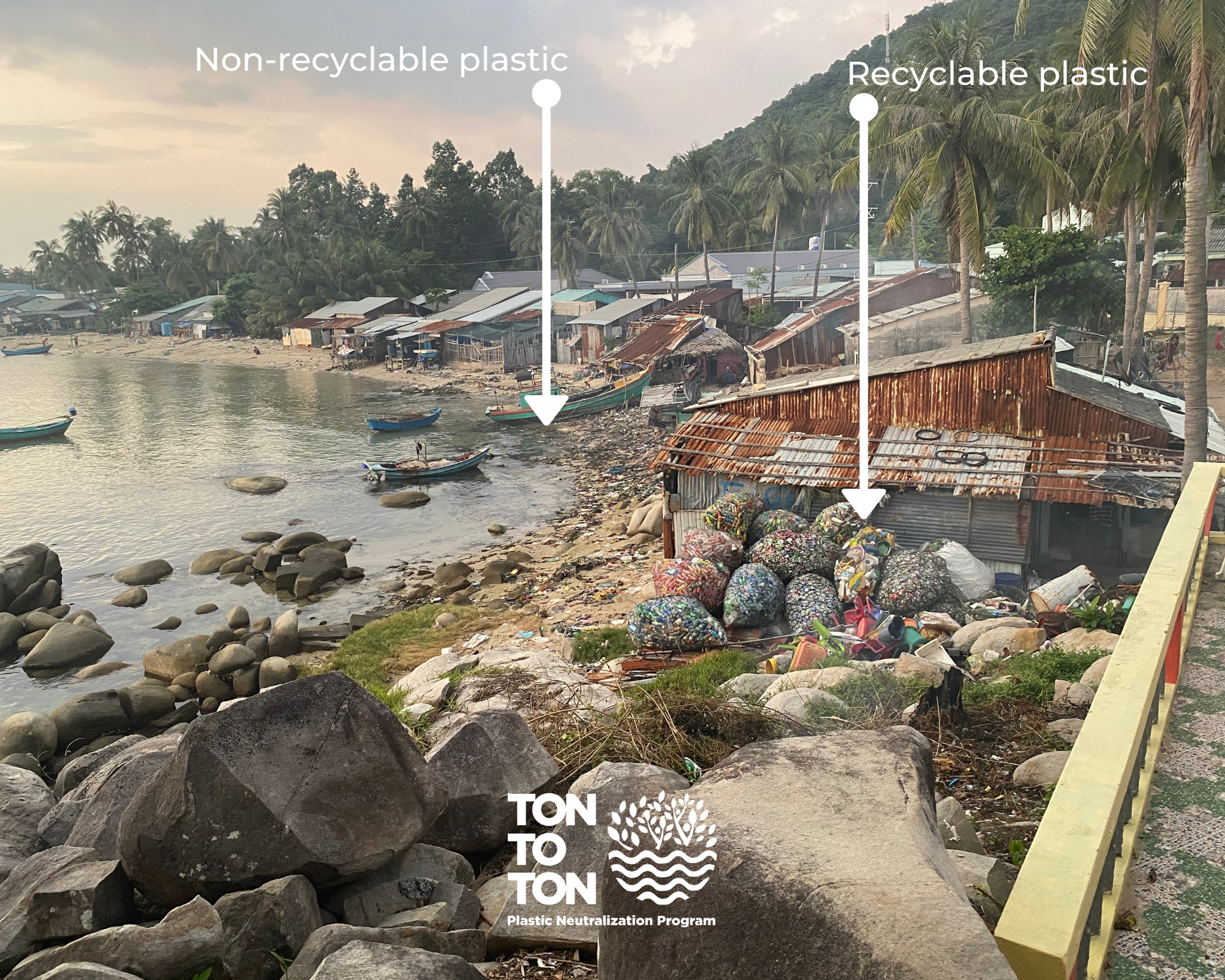

Single-use plastic is too light, and its value too low to be collected and recycled. It has no market value, making it "Orphan Plastic" that is more likely to become marine litter. Ocean-bound describes plastic’s last stage before it ends up in the ocean. It appears in rivers, shorelines, and even land. While most of the ocean-bound plastic (OBP) originates within 50km of the shore, OBP may come from a location more inland, but because of mismanagement, it’s now headed toward our ocean. The best way to guarantee that plastics stay out of the ocean is to stop the issue at its source. Unfortunately, single-use plastics are too convenient, which means that we’re still years away from eliminating non-recyclable plastics entirely.
While we wait for a viable substitute for non-recyclable plastics, we focus our efforts upon projects that seek to stop mismanaged OBP before it hits our ocean.
- Collection site identification. TONTOTON team will select sites based on the OBP certification and proximity with the factory.
- Upgraded co-processing technology near the identified site. The cement factory partner should have the technology and management system required to treat the waste.
- Governmental approval & community support. All activities must be submitted to the people's committee and Ministry of Natural Resources and Environment (MONRE)
Our learned lessons are mostly driven by the challenges we encountered and is continuously encountered at some point.
- Developing and maintaining Government cooperation in different areas. It is important that all activities are supported by local government. When objectives and activities are aligned, creating a sustainable local waste management system would be attainable.
- Developing sources following ocean-bound standard. Due to pandemic, mobility has been a challenge and developing new collection sites compliant to the ocean-bound standard could be tedious. It has to be done right all the time. Auditors and certifiers would ideally need to have a clear visual idea of the subject location.
- Developing logistics solution for moving wastes between collection and treatment sites. Collected waste due for co-processing must maintain the lowest moisture content. During rainy season, long travels to transport the wastes to cement factories would not be ideal. The development of collection site must be considered together with the proximity of cement factory that will do co-processing.